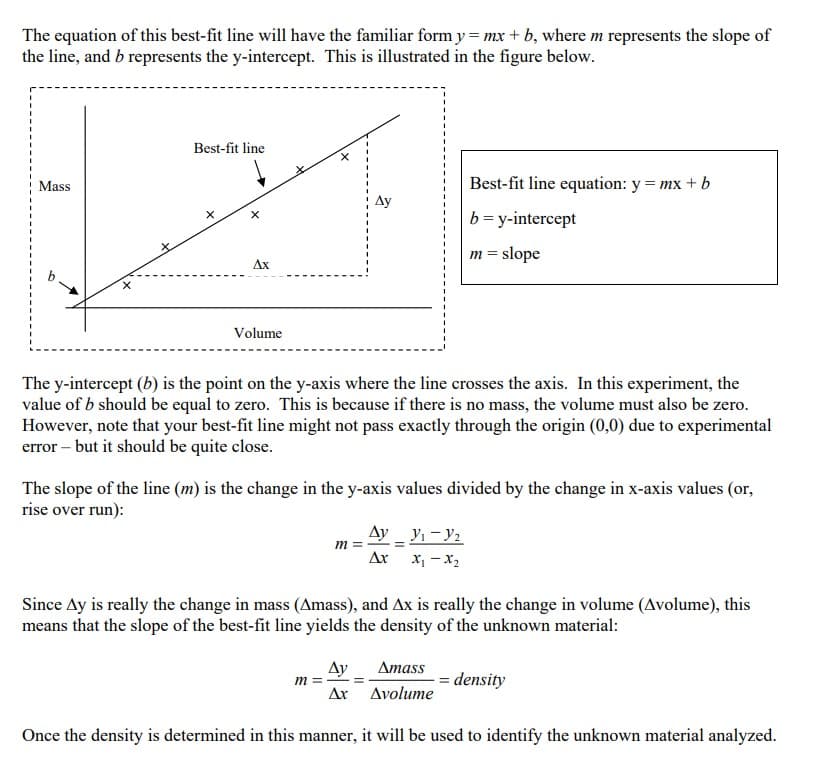The equation of this best-fit line will have the familiar form y = mx + b, where m represents the slope of the line, and b represents the y-intercept. This is illustrated in the figure below. Mass Best-fit line Ax Volume Best-fit line equation: y = mx + b b=y-intercept m = slope
The equation of this best-fit line will have the familiar form y = mx + b, where m represents the slope of the line, and b represents the y-intercept. This is illustrated in the figure below. Mass Best-fit line Ax Volume Best-fit line equation: y = mx + b b=y-intercept m = slope
International Edition---engineering Mechanics: Statics, 4th Edition
4th Edition
ISBN:9781305501607
Author:Andrew Pytel And Jaan Kiusalaas
Publisher:Andrew Pytel And Jaan Kiusalaas
Chapter1: Introduction To Statics
Section: Chapter Questions
Problem 1.12P: A differential equation encountered in the vibration of beams is d4ydx4=2D where x = distance...
Related questions
Question
a. how will you calculate the value of the slope of this best-fit line?
b. How will the value of the slope help you identify the unknown material that the cylinders are made of?

Transcribed Image Text:The equation of this best-fit line will have the familiar form y = mx + b, where m represents the slope of
the line, and b represents the y-intercept. This is illustrated in the figure below.
Mass
Best-fit line
+
Ax
Volume
Ay
The y-intercept (b) is the point on the y-axis where the line crosses the axis. In this experiment, the
value of b should be equal to zero. This is because if there is no mass, the volume must also be zero.
However, note that your best-fit line might not pass exactly through the origin (0,0) due to experimental
error - but it should be quite close.
The slope of the line (m) is the change in the y-axis values divided by the change in x-axis values (or,
rise over run):
m=
m =
Best-fit line equation: y = mx + b
b=y-intercept
m = slope
AyY₁-Y₂
=
x₁ - x₂
Ax
Since Ay is really the change in mass (Amass), and Ax is really the change in volume (Avolume), this
means that the slope of the best-fit line yields the density of the unknown material:
Ay
Ax
Amass
Avolume
Once the density is determined in this manner, it will be used to identify the unknown material analyzed.
= density
Expert Solution
This question has been solved!
Explore an expertly crafted, step-by-step solution for a thorough understanding of key concepts.
Step by step
Solved in 2 steps

Knowledge Booster
Learn more about
Need a deep-dive on the concept behind this application? Look no further. Learn more about this topic, mechanical-engineering and related others by exploring similar questions and additional content below.Recommended textbooks for you

International Edition---engineering Mechanics: St…
Mechanical Engineering
ISBN:
9781305501607
Author:
Andrew Pytel And Jaan Kiusalaas
Publisher:
CENGAGE L

International Edition---engineering Mechanics: St…
Mechanical Engineering
ISBN:
9781305501607
Author:
Andrew Pytel And Jaan Kiusalaas
Publisher:
CENGAGE L